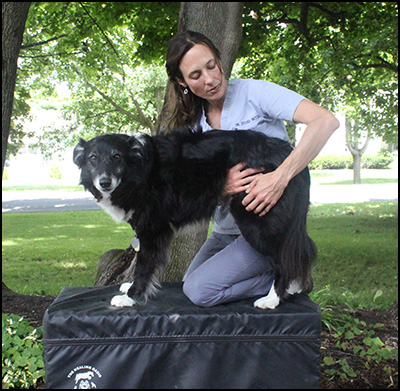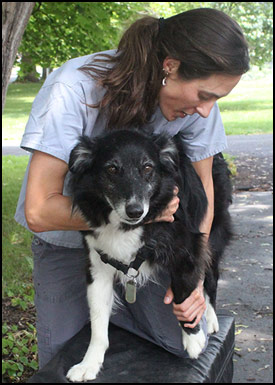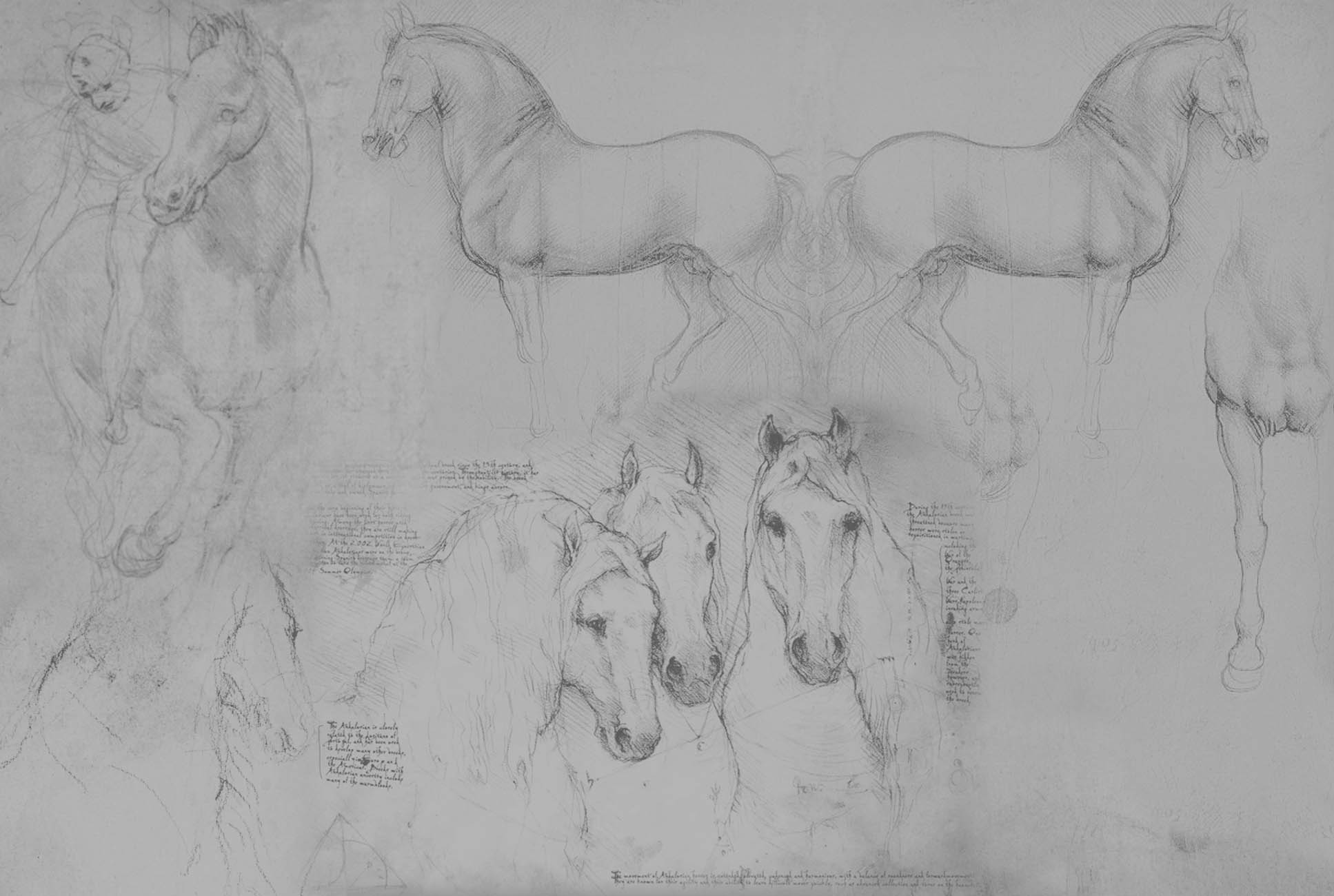Canine
Whether they are agility competitors, weekend frisbee catchers, professional working dogs, or aged companions, dogs benefit from Acupuncture and Chiropractic in all of the same ways as do horses, or any other creature!
Canine Chiropracitc
 What is Chiropractic?
What is Chiropractic?
Chiropractic is a method of treating musculoskeletal and nerve dysfunction with direct, hands-on techniques. It can relieve musculoskeletal pain, increase range of motion and enhance quality of movement.
The basic premise of Chiropractic Medicine is that pain syndromes and disease can arise as a response to suboptimal functioning of the nervous system. This can be a primary or secondary problem, and which it is determines the role that Chiropractic plays in treatment. Chiropractic Medicine is a potent form of medical assessment and treatment when used correctly, sometimes on its own and sometimes with other medical therapies, or as part of a rehabilitative program.
What types of conditions can benefit from chiropractic treatment?
Conditions such as unexplained lameness, compensatory movement problems, Temporo-Mandibular Joint dysfunction, paresis, pain, musculoskeletal injuries and some behavioural issues respond well to Chiropractic treatments. Chiropractic is also an essential component of Sports Medicine, and an integral part of rehabilitative therapy or a performance maintenance program.
Examples of Chiropractic in Maintenance Care
Dogs with hip or neck discomfort often benefit from chiropractic care.
Chiropractic can be used to keep agility dogs performing with finesse, and frequent frisbee catchers agile.
Chiropractic can be a tremendous benefit to dogs as part of a pre-surgical preparatory or post surgical rehabilitation program.
How does Chiropractic Work?
Chiropractic practitioners use bones as contact points with which to induce the movement of specific muscles, soft tissue, and joints. Movement is received by the nervous system as sensory input. As the nervous system integrates and adapts to that information, it responds in ways that create the benefits of a chiropractic adjustment, such as an increased range of motion and decreased pain.
In General Terms: What is a Chiropractic Adjustment?
A chiropractic adjustment is a light, quick thrust to a joint that imparts movement and stimulates both sensory and mechano-receptors of the joint and its surrounding soft tissue.
Benefits of Chiropractic Treatments:
- Pain Relief
- Joint Mobilization
- Restored Function
- Enhanced Movement
- Increased Range of Motion
- Better balance and co-ordination
- Soften Fibrous Adhesions & restrictive Connective Tissue formed in response to a previous injury
- Improved recovery after orthopedic surgical procedures
- Lessen or offset side effects of other essential, conventional treatments
What is the Goal of a Chiropractic Adjustment?
 The goal of a chiropractic adjustment is to induce movement in a way that stimulates autonomic and neurologic responses that shift the body’s balance towards homeostasis. Where to induce movement and which level of the nervous system to target with adjustments is determined during the initial chiropractic and neurologic exam. The end result of any chiropractic adjustment is stimulation of the cortex, a part of the brain essential to the integration of information, sensory perception, and learning.
The goal of a chiropractic adjustment is to induce movement in a way that stimulates autonomic and neurologic responses that shift the body’s balance towards homeostasis. Where to induce movement and which level of the nervous system to target with adjustments is determined during the initial chiropractic and neurologic exam. The end result of any chiropractic adjustment is stimulation of the cortex, a part of the brain essential to the integration of information, sensory perception, and learning.
What Chiropractic is NOT
Chiropractic is NOT re-arranging bones that have become “stuck” or have slipped “out” of place! The “Bone Out of Place” theory was an early attempt to explain how chiropractic worked in the late 1800’s, before it was understood that the success of chiropractic lies in its ability to influence the nervous system. The language of the bone out of place theory is compellingly simple, which may explain why it has persisted for so many years despite its inaccuracy.
Can a Bone Be “Out of Place”?
Yes. When a bone is truly out of place, it is called a “subluxation” in veterinary medicine and can be seen on radiographs (x-rays) as a displaced joint. It is an acute condition that usually requires surgical intervention. Chiropractors and Veterinarians use the word subluxation to mean different things, and this has compounded the misunderstanding about what it is that Chiropractors actually do. When a Chiropractor speaks about a “subluxation” they are referencing a “Vertebral Subluxation Complex”, which is a term used to describe joint dysfunction . A Vertebral Subluxation Complex refers to area of the spine with reduced mobility. It includes two joints, their surrounding vasculature, and soft tissue. A Vertebral Subluxation Complex is a descriptive term, not a medical diagnosis. Although it is not a structural deviation, a Vertebral Subluxation Complex can induce structural deviation over time if it remains uncorrected.
How does Animal Chiropractic Relate to “Regular” Veterinary Medicine?
Chiropractic is like any other type of treatment in that its effectiveness is contingent upon establishing a diagnosis and ruling out contraindications prior to treatment. Establishing a diagnosis enables us to define and understand the condition, problem, or disease so that we can provide the most effective treatment, and tailor it to the specific needs of the patient. The process of arriving at a diagnosis is not always straightforward, because neither body function, disease, nor health are linear processes. Finding a diagnosis may require testing such as a laboratory analysis of a blood or tissue sample, or imaging such as radiographs or ultrasound. In Veterinary Medicine, the process of ruling certain conditions out can be as important as ruling others in. This is equally true in the practice of Chiropractic, which necessitates ruling out conditions that could be contraindicative to Chiropractic treatment.


